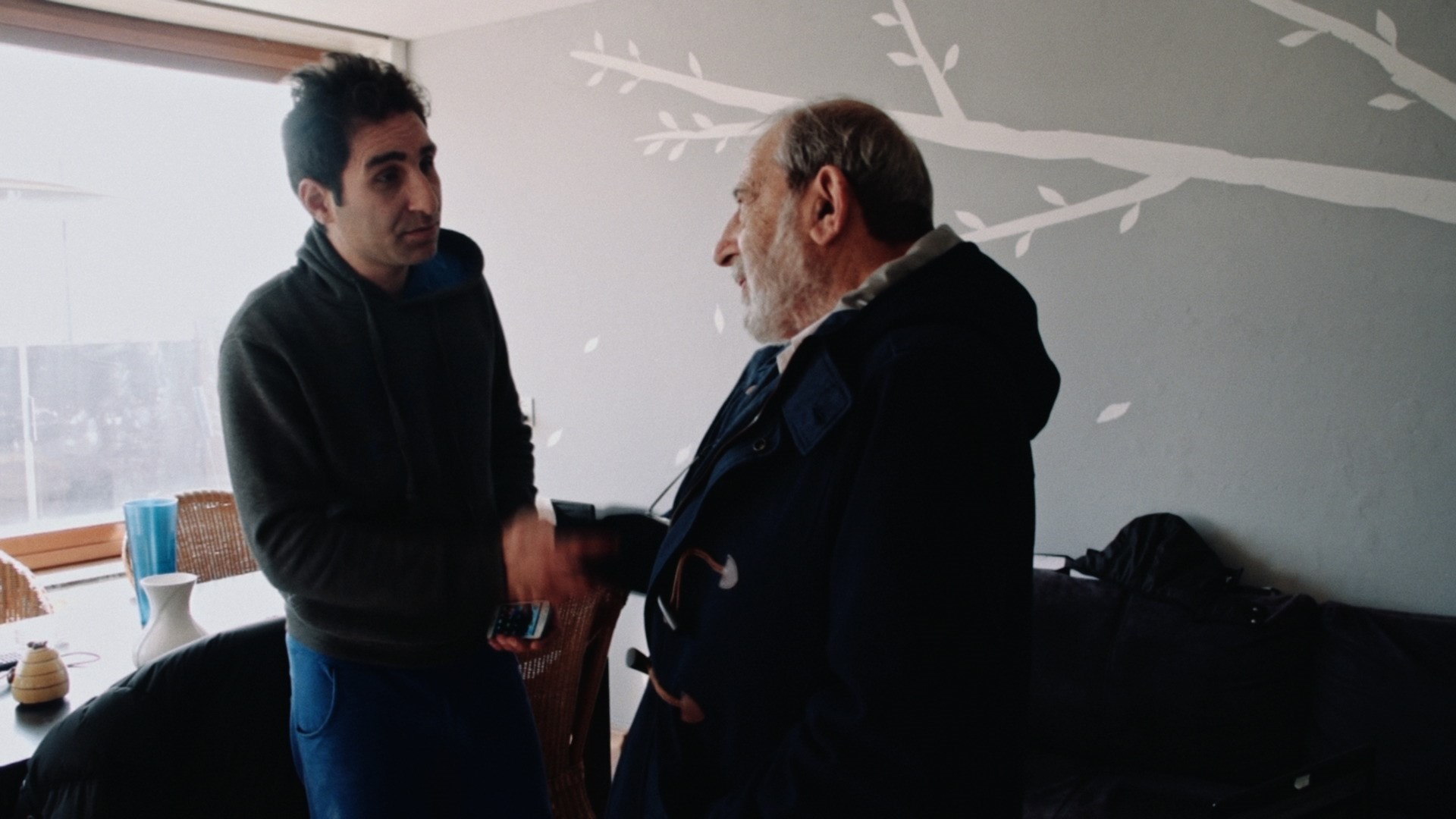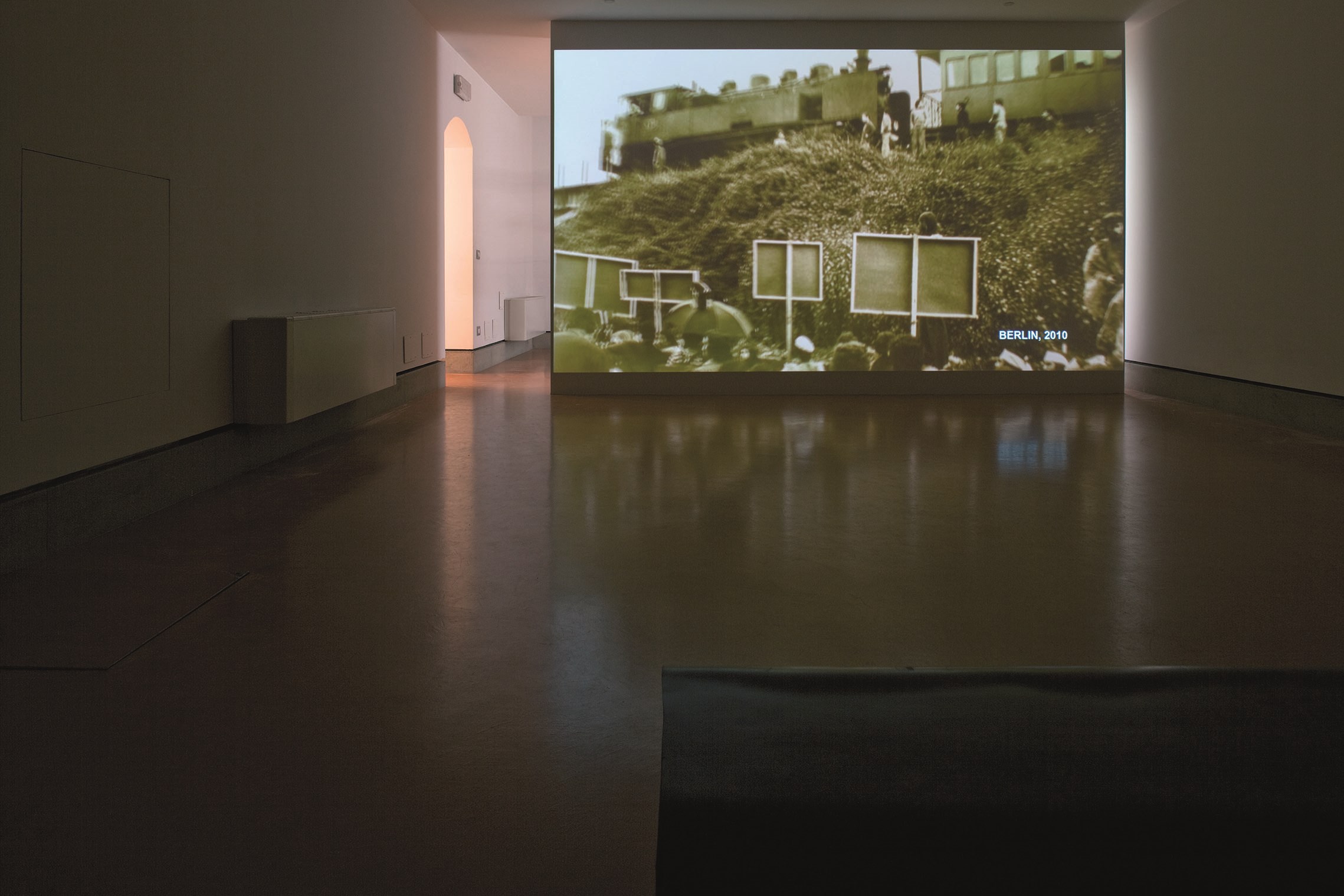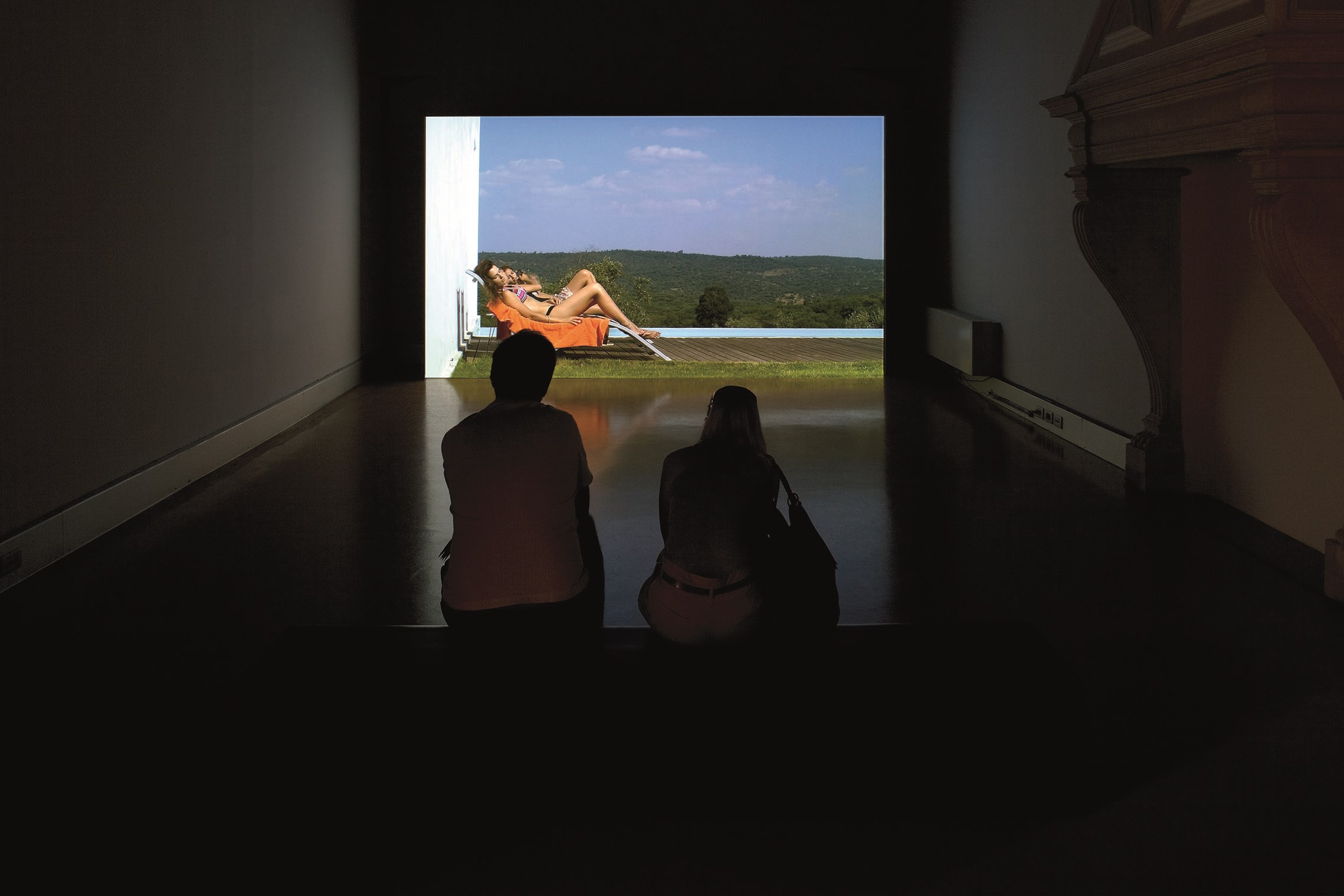Films: reverberations of national representations
Architect, PhD student (ISCTE-IUL)
July 2016
National representations are like a paso (andor, a movable platform for saints) that you take for a walk around the village during a period of festivities: the parish saints are put on a pedestal, everything is adorned with exuberant ornaments and once the paso is elevated, it is paraded so that everyone can admire it. However, once the procession is completed and the paso taken apart, not much is left besides the memories of those who saw it. In the case of representations, once the event is over and the exhibition is taken down, is there any part of them that persists and allows for their meaning to be reconstructed as time goes by and distance sets in? We are left with the catalogues (in the cases that effectively resulted in publications) that, while usually sold out during the event, can be found in libraries, although not as often as one would wish. In turn, Internet pages rarely last because no one is left to manage them when the party is over – as is the case of the “Homeland” (2014) and “Lisbon Ground” (2012) websites, which are both inactive. The scenographical materials, along with the gorgeous models made purposely for the exhibition, are most probably tucked away and stored in some basement, only to be forgotten. On the other hand, the audio-visual productions, or at least the ones that result from collaborations with other artistic areas, end up enjoying a certain degree of autonomy outside of the architecture milieu (even when they are not released in DVD format, it is always possible to get to them through the artists and filmmakers who created them). Of all these artefacts, films are the ones that end up acquiring a life of their own, extending and prolonging the effect of national representations far beyond the event that birthed them – living as reverberations that endure and that can be revisited at any time, transporting the critical discourses and opinions that marked the different presences of Portuguese architecture in international events into the present.

The case of the current Portuguese representation at the Venice Biennale – Neighbourhood: Were Alvaro meets Aldo, curated by Nuno Grande and Roberto Cremascoli – and the “Neighbours” series that accompanies it, directed by the journalist Cândida Pinto, is considerably paradigmatic. The four documentaries of the series, each lasting around half an hour, besides being permanently projected in the exhibition were also shown on television and are now available on the SIC Notícias channel website (which is less likely to become inactive). Furthermore, the documentaries may eventually be edited into one single film to be shown in cinemas and even to compete in film festivals (similar to what happened with “Copan”, another Cândida Pinto film about the famous Oscar Niemeyer’s building in São Paulo). By achieving a degree of autonomy and a broader dissemination, these films allow the national representation to surpass its own character as an ephemeral and highly specialised event, creating an immediate return for the country, while involving the whole of society in the debate about Portuguese architecture. Considering that this is a state-sponsored initiative, the effort to render the event more encompassing and inclusive is indisputably admirable. But beyond this dimension, “Neighbours” is in perfect synch with the turbulent times that we are living in, particularly in Europe, and it was probably not by chance that the curators decided to invite a journalist to direct it.
Europe, as a theme, had already been the focus of another national representation – “Europe: Portuguese Architecture in Emission”, for the 7th São Paulo Biennale in 2007. Initially conceived for the Lisbon Architecture Triennale in 2007, it also resulted in the commission of a film, “Heavy Architecture” by Edgar Pêra. His approach could not have been more different than the one adopted by Cândida Pinto in “Neighbours”. However, times were different. The country had just undergone a decade of economic prosperity. Huge investments had been made in the form of public buildings and the disastrous crisis that would come in the following years was not yet being felt, although some could already sense that the bubble would eventually burst. Coincidently or not, this representation was also curated by Nuno Grande (this time with Jorge Figueira) and the selection of Edgar Pêra (the “enfant terrible” of Portuguese cinema) for the direction of a film about Portuguese architecture was demonstrative of the intentions of the curators, who aimed to “reveal the ‘breath’ that Portugal had taken in order to catch up with the rest of Europe, starting at the end of the 80’s”. In turn, Edgar Pêra chose Nel Monteiro (yes, the “pimba” music singer!) to be a spokesman for the sufferings of the people. Alluding to the millions of euros spent on public buildings, he centres the entire film on a song from the singer’s repertoire, which roughly translates to something along the lines of “Bitch Life Shit Turds”. In a mix of realism and surrealism, to which we have become accustomed in Edgar Pêra’s work, “Heavy Architecture” is an audio-visual record of four great national projects (CCB, Expo98, the Stadiums of Euro 2004 and Casa da Música). Projecting several archival images from television news programmes of the time, it created a confrontation filled with irony between the architecture of the buildings and the discourse of the politicians involved in their construction. It left for posterity images like the one of António Vitorino projected on the porch roof of the Portuguese Pavilion. The curvature of the surface distorting the shape of his head, making him look like an alien, while he assured the public that Expo98 would open on time.
On the other hand, “Reversed Landscapes” stands as the other side of the same coin. It was one of the first commissions for a film (by photographer Daniel Blaufuks) to represent Portuguese architecture beyond borders, in the 5th São Paulo International Architecture Biennale in 2003, curated by Jorge Figueira and Ana Vaz Milheiro. Shot only a few years before “Heavy Architecture”, this film does not present a country riddled with architectural excesses. “Reversed Landscapes” is the reflection of a largely disqualified territory, which is suddenly confronted with the emergence of new and delicate works of architecture. Porto University’s Faculty of Architecture, where Siza Vieira teaches, is the first of the nine buildings included in the film, which according to the initial narration, “represent a concise panorama of our landscape, and portray Portuguese architecture in a dynamic relationship with reality.” This film shows architecture in a transitory state; the focus is not so much centred on the constructed form, but on the emptiness that it creates, on the interstices that arise between volumes, the crevices that form on the buildings and that allow the exterior to enter and contaminate it, while at the same time returning it once more, transformed, into the outside world – “they are inverted landscapes, that emerge in an almost transitory way, in constant movement, like apparitions”. And what better medium than moving images to communicate the fleeting and immaterial character of architecture?


However, the national representation that more openly explored the intrinsic value of films as mechanisms for the representation and communication of architecture was “No Place Like: 4 houses, 4 films” – curated by Julia Albani, José Mateus, Rita Palma and Delfim Sardo for the 12th edition of the Venice Biennale in 2010. In the presentation text, it posed the following question: “How else can these houses be shown if not through films?” In fact, the core of the project of this representation is embodied by four films by three artists and a filmmaker focusing on four houses by different architects. Filipa César filmed Siza Vieira’s Bouça; João Onofre filmed Ricardo Bak Gordon’s two Houses in Santa Isabel; Julião Sarmento took on Carrilho da Graça’s Candeias House and João Salaviza explored Aires Mateus’ House in Comporta. Similarly to the recent Cândida Pinto documentary about the Bouça neighbourhood, Filipa César’s film entitled “1975” (which looks into the turbulent times surrounding the “SAAL” project and coincides with the year the director was born) also invokes the more humanistic facet of Siza Vieira’s architecture. However, in “1975” there are no people. The film is made up of one single travelling shot that crosses through the neighbourhood where the spaces are always unoccupied. However, the human dimension is always subtly present through the presence of everyday objects left out by the residents and the fluid way in which the camera moves from the intimate spaces into the exterior public space and then enters once more into another house and another life. Using extremely simple narrative devices, the four films take on an important malleable quality, presenting architecture in its most fundamental essence of form and space, with a certain degree of alienation towards the context and circumstances that lead to the edification of the structures. In Filipa César’s film, the tumultuous process of the Bouça project is only revealed through small but effective subtleties. The title of the film (“1975”), the final image of the film (the photograph of the construction period with a group of residents) and the telephone message left by Alexandre Alves Costa. In very few words he seems to condense everything that the neighbourhood went through – from the terrible critiques in the newspapers to the bomb that exploded at the SAAL headquarters.
National representations are always more than just mere presentations of architecture: they enclose critical thought (at least this has been the norm up until now) and establish vital reflections of the time during which they are produced. This article mentioned four representations (São Paulo in 2003 and 2007, Venice in 2010 and 2016) all of which produced film projects and featured, with more or less importance, projects by Siza Vieira. Without a doubt, his architecture is the one that is more often “taken for a walk” by international events. Even so, these films could not be more different from each other. This may indicate that, on the one hand, each representation results in a very singular identity and, as a whole, functions as important hallmarks of the different historical moments of Portuguese architecture. Therefore it makes the preservation and systemisation of all the information pertaining to the events fundamental. On the other hand, in the context of the creation of a film, by extending the invitation to other artistic areas, a reflection on architecture (almost always confined to its own circle of debate) can also take place, leading to renovated and less fixed perspectives of this discipline. As reminiscences of national representations, these films ultimately enjoy a certain timelessness and provide (in themselves and each in its own way) mechanisms for alternative and peculiar interpretations of Portuguese architectural culture – serving as transmitters and perpetuators of its legacy. ◊